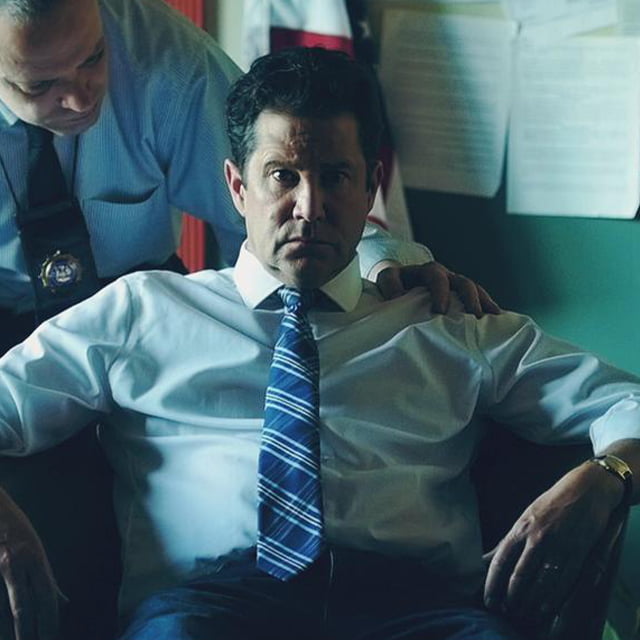Moviegoers with a passion for psychological thrillers will welcome the return of “Fright Night” star William Ragsdale in director Anthony de Lioncourt’s new film, “When We Dance the Music Dies,” which takes moviegoers along on a riveting ride that will have them questioning the very nature of reality. Those film lovers are in for a special treat, if they also happen to share de Lioncourt’s nostalgic fondness for the 1980s horror classic, ”Fright Night!”
Watch the trailer on Vimeo here.
The new film features William Ragsdale, the star of that 1985 movie, in his return to the thriller genre that first brought him widespread fame. Eric Roberts also brings his intensity to this new film, following performances that have earned him three Golden Globe Award nominations (“King of the Gypsies,” “Star 80,” and “Runaway
Train”) and an Oscar nomination for Best Supporting Actor (“Runaway Train”) during his long and celebrated career. Rounding out the lead cast is Catherine Mary Stewart, who also developed a large and dedicated following thanks to her work in two 1980s films
that took moviegoers into the unknown – “The Last Starfighter” and “Night of the Comet.”
In writing the screenplay for “When We Dance the Music Dies,” Anthony de Lioncourt builds on the reality-distorting psychological themes that he featured in his two previous indie films, and he says he was inspired by a mysterious recent incident in the news that seemed to blur the line between reality and the supernatural. The story of the frantic search of a father [Tom Walton, portrayed by William Ragsdale] or his college-age daughter [Audrey Walton, portrayed by Theresa Moriarty], who vanishes under mysterious experiences – and the twists and turns of his journey leads him to
question his own sanity. The curious events portrayed in the film are inspired by a true story that captivated de Lioncourt – the odd circumstances surrounding the disappearance and tragic death of a young woman by the name of Elisa Lam.
As detectives worked to learn what had happened to the young woman, they found surveillance video of Ms. Lam acting bizarrely in an elevator in a Los Angeles hotel. When they saw that she had pressed every button in the elevator, in an apparently haphazard pattern,
investigators found that Ms. Lam and her friends were engaged in an activity known as “The Elevator Game” – an urban myth that originated in Asia and South Korea which promised those who played the game that they could “access an alternate dimension” by pressing
the buttons in an elevator in the “correct” sequence, and exiting on a particular floor. Ultimately, Ms. Lam’s body was found in the water tower atop that Los Angeles hotel, and the way that she met her demise is still unclear.
In “When We Dance the Music Dies,” the young woman’s father’s investigation leads him to an eccentric cult leader [Clayton Riggs, the cult leader, portrayed by Eric Roberts] who has persuaded the members of his group that they all originated from “another dimension,” and – through their leader – they could “return there.” Tom Walton’s desperation is shared by his wife Helen [portrayed by Catherine Mary Stewart] as his search takes one unexpected turn after another.
Filmgoers who give themselves to this psychological journey as the story unfolds, are in the hands of a master director who has long been fascinated by how a “tenuous grasp of reality” can be captured on film. Just as he was inspired by the strange disappearance of Elisa Lam, Anthony de Lioncourt is also intrigued by recent work in the scientific community that suggests there is “binary code” in the universe. (In other words, the “reality” we are experiencing may not be the “only” reality. Yes, we may soon be entering “The Matrix!”)
As those who have enjoyed de Lioncourt’s first two films — “The Protokon” (2015) and “Thorns for Flowers” (2016) – can attest, there is a “psychedelic side” to his work, as the director describes it. He says he is fascinated by the way our memories distort reality and the way the line between dreams and our waking state is always a bit blurred. Like iconic directors in the history of cinema
like Akira Kurosawa and Alain Resnais have explored in their classic films, the nature of reality is much more subjective than we might like to believe, and this is an important theme in “When We Dance the Music Dies.”
For this new film, de Lioncourt has “worn many hats” – not only as writer and director, but also as cinematographer and soundtrack composer. One major source of joy in being a filmmaker, he says, has been the opportunity to visualize communicate a character’s state of mind. “Because I direct and also do the cinematography,” he says, “I get to really set the mood and the tone and the atmosphere. I feel that’s really important, especially with this story, because it has its supernatural aspects as well as a strong dramatic tension.”
“When We Dance the Music Dies” also marks the third film that de Lioncourt has directed in partnership with Mark Mattson, who served as executive producer on this project. The duo began working together when Mattson served first as de Lioncourt’s model for some scary photos. When they began collaborating on their first feature-length film, “The Protokon” – Mattson was once again cast as the killer. Despite a tight budget, the warm reception to that film, and to their follow-up effort (also a psychological thriller), paved the way for their third film, the first one produced with a SAG cast and union sanctioned crew.






